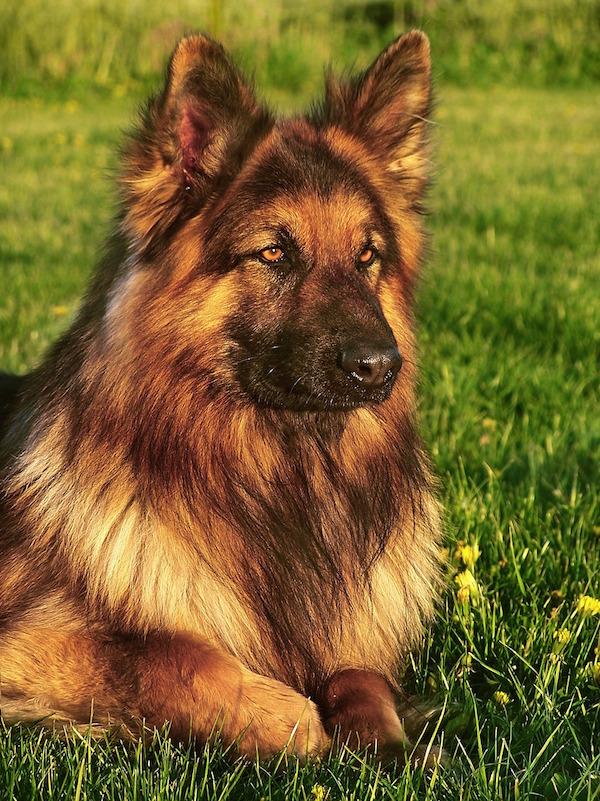
Some of the dogs Max von von Stephanitz used in his breeding program to create the fabulous German Shepherd Dog had long hair, in some measure because von Stephanitz wanted qualities that had less to do with appearance, and more to do with work ethic, independence, courage and loyalty. Over one hundred years later, the genes of those longer haired dogs remain in the gene pool, and it’s believed that today, 25% of GSDs have a long stock coat.
A bit of research reveals that von Stephanitz, himself, thought long-coated silky haired dogs lacked the undercoat he believed the breed needed to do its job. Soft to the touch, and sometimes long enough to actually “part” down the dog’s spine, long hair like this essentially forms a rain channel that holds water and drenches the skin. This is hardly a weatherproof coat, a trait essential to the breed’s original role. As an aside, von Stephanitz was just as concerned about hair that was too short as he was about hair that was too long, but that is a topic for another time.
Most European and American registries have declared this coat variety to be a disqualification from the show ring. This isn’t to say no one accepts long hair. In 2010, the Verein fur Deutsche Schaferhunde’ added the “Long stock hair … with undercoat” variety of GSD to its conformation show competition standard.
Long hair German Shepherds are sometimes marketed as “King Shepherds,” a dog developed by Shelley Watts-Cross and David Turkheimer by mixing Shiloh Shepherds (a mix of American/European German Shepherds and Alaskan Malamutes), American Line German Shepherds and Great Pyrenees dogs. The King Shepherd goes by other names as well, such as the King German Shepherd, King Size Shepherd, Giant German Shepherd, and the King Size German Shepherd. It’s not recognized by the AKC, but is through ARBA (American Rare Breed Association). Perhaps one day, it will make progress as a stand-alone breed, but for now, it’s technically more accurate to say that it’s a blend of German Shepherds and several other breeds.
Long Coated German Shepherd image from Pixabay CC0 Public Domain and free for commercial use

This information is no long accurate. Many long coats do have undercoat and come from stock hair parents. In East Germany many very old kennels have produced long coats recently from well know 100% GSD bloodlines —no Akitas or whatever. If a long coat puppy from the breeding of two stock parents bearing long heritage pedigrees is not a German Shepherd Dog —-what is it?
Appreciate the insights, Celeste! Certainly DNA testing is helping us learn more!